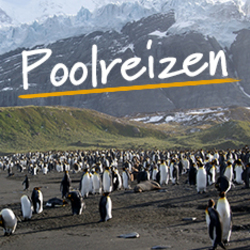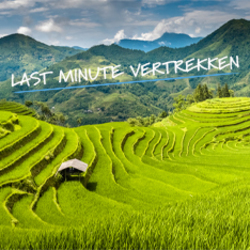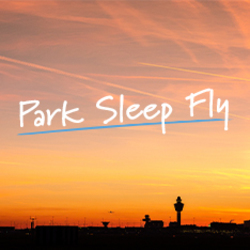Maak kans t/m 5 januari
BekijkActivities
- Culture
- Cultural Wonders
- — Follow ancient traders to the Silk Road cities of Samarkand, Khiva and Bukhara — Admire avant garde art once hidden from Soviet authorities at the Savitsky Museum — Sleep in a yurt close to Aydarkul lake — Experience life in a remote mountain village with a night in a homestay — Stroll leafy boulevards and discover Soviet architecture in Tashkent — Witness the tragic results of an environmental disaster at the Aral Sea
Food
-
1
Start Tashkent
Our adventure begins in Tashkent, the capital of Uzbekistan. There are no arranged activities today, as many flights arrive very late in the evening or early tomorrow morning. Classic accommodation: Gabrielle International Hotel or Milan Hotel (or similar)
-
2
City tour of Tashkent
Late morning, we explore this Central Asian capital, which includes visiting Independence Square, which is flanked by public buildings and water fountains, and the Old City, home to mausoleums and a bazaar. Tashkent was largely destroyed by earthquakes in the 1960s and was rebuilt in true Soviet style with pleasant leafy boulevards and lots of fountains to cool the summer heat. There are also very interesting museums and mosques. This evening, we enjoy dinner at a local restaurant before returning to our hotel. Please note: Some flights arrive into Tashkent very early this morning, giving a few hours to rest before the city tour. Classic accommodation: Gabrielle International Hotel or Milan Hotel (or similar)
-
3
High-speed train to Samarkand; city tour
Travel to Samarkand by high-speed train (approximately 2hr 15min) this morning. Samarkand is a jewel of the ancient and modern Silk Road. We have a busy day, taking in many of the sights. There is the exquisite jade mausoleum of Gur-i-Emir, the resting place of Tamerlane, now considered by many to be an Uzbek national hero. Perhaps the greatest treasure is Registan Square, Tamerlane’s outstanding creation, a vast complex of domes and minarets, mosques and madrassas. We visit the grandiose Bibi Khanum mosque, and the magnificent Gur-Emir mausoleum, where Tamerlane, his sons, and his grandson Ulugbek are buried. Samarkand is still a major hub for textiles, carpets and art and is a great place to try your bargaining skills and explore the bazaar. Classic accommodation: Ideal Hotel or Malika Prime (or similar)
-
4
Explore Samarkand more; ceramics painting masterclass and paper-making demonstration
We continue our exploration of Samarkand today, visiting: Ulugbek Observatory; Shahi-Zinda, the necropolis of the rulers and nobility of Samarkand, home to magnificently decorated mausoleums; and Siab bazaar. We also enjoy a masterclass on making and painting ceramics, plus a demonstration on creating silk paper using medieval technology in the village of Konigil. Classic accommodation: Ideal Hotel or Malika Prime (or similar)
-
5
Free morning in Samarkand; drive to the Nurata mountains
Enjoy free time in Samarkand this morning for shopping or further exploration. In the afternoon, we drive to the Nurata Mountains through the central Jizzakh Region. Our destination is the ancient mountain village of Sentyab, nestled into a fertile river valley. We have time for a scenic walk to explore the village, before cooking a traditional dish with our hosts. Simple accommodation: Homestay
-
6
Mountain village walk; drive to yurt camp
This morning, we hike (three to four hours) to the ruins of the ancient village, where the houses were originally built of flat stone. We descend to the river to inspect petroglyphs and visit local craftsmen who weave carpets and embroider suzani (a highly decorative textile). After lunch, we drive west for three hours to the Kyzylkum desert, where we stay overnight at a simple yurt camp. After arriving, we take a walk in the vicinity of the camp and get acquainted with the flora and fauna of the desert. After dinner, we sit around a large bonfire while listening to traditional folk musician, who sings with a dombra (a stringed instrument). Simple accommodation: Yurt camp
-
7
Camel ride, lunch near Aydarkul lake; tour Nur; sleeper train to Kungrad
After breakfast, we can take a short ride (optional) on two-humped Bactrian camels, before heading to nearby Aydarkul, a huge lake (more than 125mi/200km long) surrounded by the sands and dunes of the Kyzyl-kum desert. Here we can relax, swim from the sandy beach, and have lunch. In the afternoon, we drive towards the city of Navoi. En route, we visit Nur, a place of pilgrimage, for a short exploration of the city. After, we continue to Navoi and take a sleeper train departing around 8.30pm to Kungrad, arriving around 9.30am tomorrow. Simple accommodation: Overnight train
-
8
Karakalpakstan: Witness the human-made Aral Sea disaster at Moynaq; drive to Nukus
We arrive into Kungrad and the Republic of Karakalpakstan, an autonomous (at least in name) republic of Uzbekistan. The Karakalpak people have a culture and language closer to that of the Kazakhs than Uzbeks. Once an area of agricultural importance, Karakalpakstan now suffers greatly from drought. The Amu Darya River (historically known as the Oxus) ran into the Aral Sea but Soviet-era irrigation schemes, particularly for the production of cotton, mean the river no longer reaches the sea, causing an environmental tragedy and the dramatic shrinking of the sea. We drive from Kungrad to Moynaq which takes about two hours. Moynaq was formerly an important fishing port on the shores of the Aral Sea. The sea is long gone and all that’s left behind are the rusting remains of the fishing fleet sat on the dry seabed amid what is now a bleak, lunar-like landscape. We have time to look around and see the town’s small museum. At times, the area can be dusty, temperatures high and air quality poor, caused in large part by the disappearance of the sea. We leave Moynaq and drive about three hours to Nukus, the capital of Karakalpakstan for the night. Classic accommodation: Pana Hotel or Jipek Joli Hotel (or similar)
-
9
Visit Savitsky art museum; explore ancient desert fortresses; drive to Khiva
Visit the Savitsky art museum this morning, which houses an important collection of Soviet avant-garde art, plus a collection of historic artifacts of ancient Khorezm and a collection relating to Karakalpak culture. Leaving Nukus, we visit the Mizdakhkan necropolis before beginning the drive to Khiva (which takes about six hours). On the way, we visit the Zoroastrian Chilpik dakhma and the ancient Ayaz-Kala fortress, where we enjoy dinner at a yurt camp before the final leg of our journey to Khiva. Classic accommodation: Malika Kheivak or Bek Minor (or similar)
-
10
Full day in Khiva, walking tour of the walled city
We spend today exploring Khiva, starting with a visit to Ichan Kala, a World Heritage Site, the inner fortress of Khiva. While exploring the open-air museum-city, we see the tile-decorated Kalta Minor minaret, Kunya Ark Fortress (the former residence of Khiva khans), the complex of Pahlavan Mahmud (a national hero and poet), Islam Khoja minaret and madrasah, Juma Mosque, the Tash Khauli and Allakuli Khan palaces. We also visit the workshops of local artisans and see the production of Khiva wool and silk carpets, embroidery, ceramic products and wood inlays. Classic accommodation: Malika Kheivak or Bek Minor (or similar)
-
11
Train through the Kyzyl-Kum desert to Bukhara
Today we travel across the Kyzyl-Kum desert from Khiva to Bukhara by train. Bukhara has more than 900 historic monuments, and we spend time visiting many sites and wandering at leisure among the old city streets. Unlike Samarkand, the district of the old town has remained separate from the rest of Bukhara and has undergone lots of restoration and preservation in recent years. In addition to its importance as a trading hub, it is the perfect setting to sit and watch the world go by, much as it has done for hundreds of years. Classic accommodation: Kavsar Boutique Hotel, Hotel Fatima, Sultan Hotel (or similar)
-
12
Explore Bukhara
We spend the day exploring Bukhara. Of particular interest is the Fortress Ark where, in the 19th century, the Emir of Bukhara had the English officers Stoddart and Connolly imprisoned and killed, and the mausoleum of Ismail Samani, a beautiful example of early Islamic architecture dating to the 10th century. We also visit the Emir’s rather kitsch Summer Palace, the old town with its domed bazaars and khauz (stone pools, which used to be the only water supply for the city), and the attractive 12th-century Char Minar. One of the great landmarks of Bukhara is the Kalyan minaret, known as the death tower, where many an unfaithful wife has met a sticky end. Classic accommodation: Kavsar Boutique Hotel, Hotel Fatima, Sultan Hotel (or similar)
-
13
Morning in Bukhara, evening train to Tashkent
We continue our tour of Bukhara today before boarding a high-speed train to Tashkent in the afternoon. After arriving in the evening, we transfer to our hotel and have the rest of the evening free to relax. Classic accommodation: Gabrielle International Hotel or Milan Hotel (or similar)
-
14
Chimgan mountains and solar furnace
We have a day trip out of Tashkent today visiting Ugam-Chatkal National Park in the Chimgan mountains. This includes a visit to the resort of Amirsai and a cable-car ascent to an observation point at an altitude of 7,545ft/2,300m, providing views of the snow-capped peaks of the Tien Shan, Charvak reservoir and hydroelectric dam. We also visit The Sun heliocomplex at Parkent, a gigantic solar furnace built in the 1980s for the Soviet Union’s Institute of Solar Physics. A vast series of mirrors concentrate the sun’s rays, creating the furnace, which is still in use today. Classic accommodation: Gabrielle International Hotel or Milan Hotel (or similar)
-
15
End Tashkent
Our trip ends after breakfast this morning. If you’d like a little more time to explore, speak to your sales representative about extending your stay in Tashkent.





















































